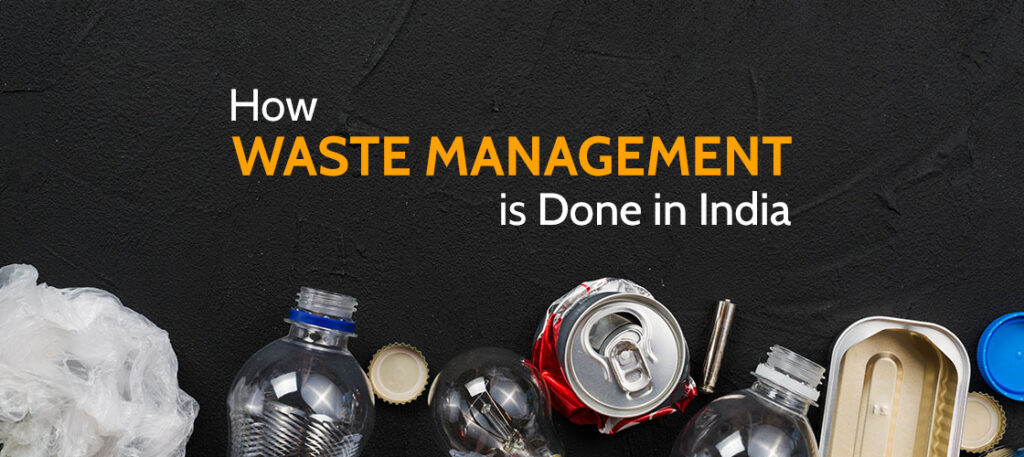Introduction
India is a fast-developing country and is excelling in almost every field today. India has been on its mission of ‘Swach Bharat Abhiyan’ for roughly six years now, and no doubt, we can see tremendous improvement in the sanitation and cleanliness of the country. But what we lack is the existence of an effective waste management system in the country. Laws and legislation are being made but not being implemented to the core, something that we can blame on the extensive red tapes and complacency.
In this blog, we will discuss about waste management from an Indian perspective. And while we do that, let us first have a look at understanding the basics.
Waste Management: A Brief Intro
It is the process of treating solid waste and provides solutions for its recycling. It involves the process of collecting, segregating, transporting, and disposal of waste. But with the increasing human activities, industrialization, urbanization, and population explosion, waste management has become a major challenge for a country like India. The statistics show that only 18% of the waste is treated out of the 60% waste that is thrown out daily in India. The rest remains untreated, and this untreated waste causes degradation of human health and the environment.
Effective solid waste management requires appropriate technologies to dispose of and treat the waste—the landfills in particular. The garbage in the dumps should be reduced so that they don’t become sources of greenhouse gases and toxins. But what is happening is the waste produced or generated is dumped here and there on the streets and in the landfills, leading to all kinds of land, water, air, and groundwater contamination
Some Things to Consider
Another shortcoming of the system is that there are no separate bins for disposing of the different kinds of waste, and there is an acute shortage of public containers. While the Government allocates some from time to time, yet having the bins stolen is nothing new.
In the bins which are there, the waste overflows and also stinks endlessly because they are hardly covered. The waste transporting vehicle is not properly covered, so the litter spreads all over the roads and streets. (We are sorry for being so visual in our description but you know right!)
The rag pickers though play a very important role in waste management in India. We had mentioned this in one of our previous blogs too and will reiterate still. The ragpickers are literally the backbone of the Indian waste management system as they go about collecting and segregating the waste- manually.
One thing that needs to be mentioned is that luckily most of the trash in India is organic, which gives an opportunity to compost a lot of waste. However, plastics have been forming a significant part of this dump lately. It is thus necessary that an effective segregation is done well.
The Whats and What Nots: Governmental Perspective
The waste management rules set by the government focus on segregating waste at source. This can be done by the resident welfare associations with the local bodies and segregate waste categorically- biodegradable, non- biodegradable, hazardous, construction, agriculture, etc. The biodegradable waste needs to be processed on-site and the recycled waste to be given to the ragpicker or the authorized dealers. A lot of housing societies have implemented the same pretty well too.
The Smart City and Clean City concepts went about playing a huge role in raising awareness in this aspect.
The point is that things can change significantly if the waste is segregated at source. One just has to stop dumping mixed waste, and stop littering on the roads just like that- both of which we feel are reasonable asks.
The Indian waste management system can become really effective and efficient by adopting a centralized system of composting biodegradable waste too. While there are roughly 100 major waste processing sites, the same can be increased to a minimum of 100 per region which will roughly translate to 1000s of sites across the country. Not only will it increase employment amongst the unskilled but also ensure better waste management.
To create an efficient waste management system, India needs to spend a lot on its infrastructure in short. It will also help prevent diseases that occur due to flooding caused due to blockage of roads due to plastics or unwanted dumps that flow around in the rains.
Conclusion
In many cities in India, the streets and districts are clean and well-maintained. They follow the waste management system effectively. But there is still a long way to go. The people should ensure that they, as responsible citizens, should practice waste management and ban the use of plastics completely. Though waste management has not been very effective in India till date, the use of new technology and abiding by various rules and laws inhibiting waste management can effectively help in the pursuit. Meanwhile, let us make sure that we make proper use of our dustbins!
See Also: Top 10 Waste Management Startups
See Also: Reducing Your Waste Costs With Balers And Compactors

